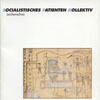 Lauded often as the zenith of their career, this album manages to be richer and more unified by actually being more disjointed: rather than the nine distinct pieces that made up Information Overload Unit, Leichenschrei is 14 shorter tracks that bleed over into one another, often invisibly. Taken as a whole there is a certain thematic linkage that pulls the album together into one of darkest, bleakest ones in existence, one that loses none of its power nearly 30 years since its release.
Lauded often as the zenith of their career, this album manages to be richer and more unified by actually being more disjointed: rather than the nine distinct pieces that made up Information Overload Unit, Leichenschrei is 14 shorter tracks that bleed over into one another, often invisibly. Taken as a whole there is a certain thematic linkage that pulls the album together into one of darkest, bleakest ones in existence, one that loses none of its power nearly 30 years since its release.
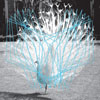 Ankersmit's first solo foray, last year's Live in Utrecht was praised by many, including myself, as a powerful and unique piece of abstraction mixing inorganic processed sounds with saxophone in an impressively diverse live setting. Here, with fellow composer Valerio Tricoli (3/4HadBeen Eliminated), the work is in a more traditional context, composed between 2008 and 2010, with the results being no less impressive than his solo live endeavor.
Ankersmit's first solo foray, last year's Live in Utrecht was praised by many, including myself, as a powerful and unique piece of abstraction mixing inorganic processed sounds with saxophone in an impressively diverse live setting. Here, with fellow composer Valerio Tricoli (3/4HadBeen Eliminated), the work is in a more traditional context, composed between 2008 and 2010, with the results being no less impressive than his solo live endeavor.
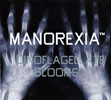 J. G. Thirlwell's Manorexia project is perhaps the most idiosyncratic in a career of idiosyncrasies. As both a specifically solo project and one in which traditional structures are an afterthought, it excels in both the realms of modern composition and pure chaos. Those strengths are magnified on this album, specifically with the inclusion of a 5.1 surround sound mix on DVD, which one of the most creative and effective uses of the format I have yet heard.
J. G. Thirlwell's Manorexia project is perhaps the most idiosyncratic in a career of idiosyncrasies. As both a specifically solo project and one in which traditional structures are an afterthought, it excels in both the realms of modern composition and pure chaos. Those strengths are magnified on this album, specifically with the inclusion of a 5.1 surround sound mix on DVD, which one of the most creative and effective uses of the format I have yet heard.
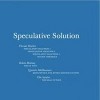 Collecting ideas from fiction and philosophy, this release clarifies Florian Hecker’s reputation for playfulness and investigation. Like a rogue mathematician who is considering questions which most people will never consider, Hecker attempts to turn metaphysical query into sound. His response to the (strange and hilarious) notion of hyperchaos will be unpalatable for some; but others of us wouldn’t have it any other way.
Collecting ideas from fiction and philosophy, this release clarifies Florian Hecker’s reputation for playfulness and investigation. Like a rogue mathematician who is considering questions which most people will never consider, Hecker attempts to turn metaphysical query into sound. His response to the (strange and hilarious) notion of hyperchaos will be unpalatable for some; but others of us wouldn’t have it any other way.
 In 2009, filmmaker Olivia Wyatt flew to Ethiopia to document an indigenous music festival (the Festival of a Thousand Stars), only to learn upon her arrival that the government had canceled it.  Rather than admitting defeat, Wyatt opted instead to embark upon an epic road trip, visiting more than a dozen of the tribes associated with the festival on their own (very remote) home turf.  The mesmerizing footage of amphetamine-fueled spirit possession ceremonies, unsettling wedding rituals, and bizarre music videos that resulted boasts some of the strangest things that I have ever seen or heard.
In 2009, filmmaker Olivia Wyatt flew to Ethiopia to document an indigenous music festival (the Festival of a Thousand Stars), only to learn upon her arrival that the government had canceled it.  Rather than admitting defeat, Wyatt opted instead to embark upon an epic road trip, visiting more than a dozen of the tribes associated with the festival on their own (very remote) home turf.  The mesmerizing footage of amphetamine-fueled spirit possession ceremonies, unsettling wedding rituals, and bizarre music videos that resulted boasts some of the strangest things that I have ever seen or heard.
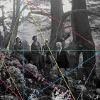 These two very different releases are the first formal full-length albums from Michael Jantz's solo guitar project, but he already has a lengthy discography behind him that spans many of cassette culture's most revered labels (Stunned, Housecraft, Digitalis, etc.).  While he covers a wide stylistic range, Jantz never seems like a tourist: he brings an assurance and a laconic charm to everything from banjo playing to neo-krautock.  In fact, he might be one of the only artists that I can think of that can seamlessly bridge the gulf between the rootsy steel string folks and the newer wave of loop-y, laptop-enhanced experimentalists.  He is not infallible though.
These two very different releases are the first formal full-length albums from Michael Jantz's solo guitar project, but he already has a lengthy discography behind him that spans many of cassette culture's most revered labels (Stunned, Housecraft, Digitalis, etc.).  While he covers a wide stylistic range, Jantz never seems like a tourist: he brings an assurance and a laconic charm to everything from banjo playing to neo-krautock.  In fact, he might be one of the only artists that I can think of that can seamlessly bridge the gulf between the rootsy steel string folks and the newer wave of loop-y, laptop-enhanced experimentalists.  He is not infallible though.
 Stunning and devasting from beginning to end, this Triosk member's solo debut emotes relentlessly, unrestrained by any prescribed genre boundaries. To futilely classify this pensive meisterstück, as some critics are wont to do, defies sense, as the piano-driven music in effect speaks for itself, in despondent whispers and virtual screams.
Stunning and devasting from beginning to end, this Triosk member's solo debut emotes relentlessly, unrestrained by any prescribed genre boundaries. To futilely classify this pensive meisterstück, as some critics are wont to do, defies sense, as the piano-driven music in effect speaks for itself, in despondent whispers and virtual screams.When I first heard Skinny Puppy's chaotic and deranged¬†Too Dark Park album in high school, it completely tore my head off. ¬†Then, naturally, I immediately decided that I needed to find something even¬†more uncompromising and unhinged. ¬†The most promising possibilities at the time seemed to be Nurse With Wound and Coil, so I spent much of the early '90s in a comically doomed and wide-ranging scavenger hunt through northeastern record stores for albums like Thunder Perfect Mind, Love's Secret Domain, and the unreleased Hellraiser themes. ¬†Love's Secret Domain wound up being the most elusive of them all (due to the collapse of Wax Trax!), but was probably also the most revelatory.
I don't believe Sleazy for a minute when, in interviews, he calls Love's Secret Domain a "positive" recording. After making Horse Rotorvator, sounding more positive was probably as easy as finding something softer than a hammer. If there is a positive thread running through Coil's third full-length, songs like "Things Happen" and "Titan Arch" dye it black; if anything purely positive is left over, "Further Back and Faster" and "Chaostrophy" obliterate it entirely. I've been listening to L.S.D. for 15 years now, and I'm convinced that it is Coil's most beguiling record, a fun-house mirror that warps and subverts everything held up to it. Calling it their acid album is just insulting, because there's much more to it than the drugs that helped spawn it.
My first experience of the music of Coil came in the mid-'90s, hearing their remixes of Nine Inch Nails songs. I tended to prefer the remixes to the NIN originals, and the versions by Coil were some of the best of those: creative and bizarre sound construction and deconstruction. Still, as remixes they were not the unfiltered visionary music of Coil proper which still allures and intrigues me to this day, a vision I fell for completely on listening to Love’s Secret Domain.
In the summer of 1993, my friend Eric showed up at my house with a grocery bag full of CDs that he swore I needed to hear. Among them were Lustmord's Paradise Disowned and Heresy and just about everything available at the time from Coil. I had already been exposed to Throbbing Gristle and Psychic TV, but this was my first taste of Coil and I started with Horse Rotorvator because I figured that I needed to hear any record that kicked off with a song called "The Anal Staircase" immediately.
Like many, my first exposure to Coil was via their Nine Inch Nails remixes in the early 1990s, which, as a middle schooler, perplexed me more than anything else. It wasn't until I was a bit older and had exchanged some mix tapes that I heard Coil properly, and "got" it. While I might be in the minority by not ranking this album as my favorite from them, Love's Secret Domain still stands as a distinct and creative album that is artistically, as well as technically fascinating.
"Out of Light, Cometh Darkness" proclaims the scroll on the cover of Love’s Secret Domain, a fitting epitaph for Coil. The rest of the cover shows a skeleton, an eye, flames, occult symbols and a spectral penis painted on an outhouse door, all combining to form the face of a lion. Feral, phallic and fantastic, Steven Stapleton’s artwork perfectly prepares you for what is to come after pressing play. Chimeric and disjointed, decadent and symmetrical, this is one of Coil’s finest moments.
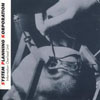
While they might not be as lauded as their contemporaries, at least in relative terms, the Graeme Revell fronted SPK was one of the essential contributors to "industrial" music, as well as the various permutations of it that came afterward. This, their debut full-length album, carefully balances the abrasive harshness, but also hints of moody, depressive ambience that would define their future.
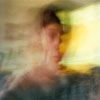
While he's spent much of this year designing and composing his Ante Algo Azul subscription series, Szczepanik has managed to also complete this full-length album, consisting of a single, beautiful piece of lingering ambience. Released on Christoph Heemann's Streamline label, it is a heartwrenchingly gorgeous piece of melancholy sound that is wonderfully unique and sounds like no one else.
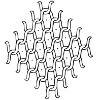 I have historically been quite fond of Barn Owl's work, but I sometimes find their extreme malleability a bit frustrating.  This collaboration with Ellen Fullman and Theresa Wong takes that trait a bit further than usual, as there is very little here that is immediately identifiable as "Barn Owl."  Perversely, though, that works just fine–in fact, all of the artists involved are almost completely and unrecognizably subsumed by the rich and vibrant drone music they've created.  This collaboration is so perfect and seamless that it sounds like a completely new band rather than the some of its parts.
I have historically been quite fond of Barn Owl's work, but I sometimes find their extreme malleability a bit frustrating.  This collaboration with Ellen Fullman and Theresa Wong takes that trait a bit further than usual, as there is very little here that is immediately identifiable as "Barn Owl."  Perversely, though, that works just fine–in fact, all of the artists involved are almost completely and unrecognizably subsumed by the rich and vibrant drone music they've created.  This collaboration is so perfect and seamless that it sounds like a completely new band rather than the some of its parts.
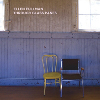 Fullman and her Long String Instrument have been quite active with collaborations, commissions, and residencies over the last few years, but this album is her debut full-length as a solo artist.  On one hand, that is quite remarkable, as she began working with her self-invented instrument of choice just about three decades ago.  On the other hand, the wait makes perfect sense, as the instrument's limited range and versatility make it a very difficult foundation to base an entire album upon.
Fullman and her Long String Instrument have been quite active with collaborations, commissions, and residencies over the last few years, but this album is her debut full-length as a solo artist.  On one hand, that is quite remarkable, as she began working with her self-invented instrument of choice just about three decades ago.  On the other hand, the wait makes perfect sense, as the instrument's limited range and versatility make it a very difficult foundation to base an entire album upon.
 This latest release from the long-running duo of Jonnine Standish and Nigel Yang is quite a bombshell, as Rhinestones was "inspired by a recent infatuation with 'eerie and gothic country music.'" To my ears, HTRK drawing inspiration from classic country heartache is already a winning formula right out of the gate, yet Rhinestones is even better than I might have hoped, as the Melbourne-based pair have spiced that new direction up further by filtering it through a "narcotic, nocturnal lens" in order to "map enigmatic badlands of strung out beauty" (count me in!). In less poetic terms, that means that Rhinestones is full of acoustic guitars, heartbreak, and half-sultry/half-ghostly vocal melodies and that every single one of these nine songs attain some degree of greatness. While yet another excellent HTRK album is hardly unexpected territory, I was nevertheless legitimately floored by how masterfully Standish and Yang executed this new vision, as Rhinestones is a beautifully stark, sensual, and effortlessly psychedelic tour de force that somehow also fitfully evokes great '80s pop in the vein of Pat Benatar. That is quite an impressive feat. This album will deservedly be all over "best of 2021" lists next month.
This latest release from the long-running duo of Jonnine Standish and Nigel Yang is quite a bombshell, as Rhinestones was "inspired by a recent infatuation with 'eerie and gothic country music.'" To my ears, HTRK drawing inspiration from classic country heartache is already a winning formula right out of the gate, yet Rhinestones is even better than I might have hoped, as the Melbourne-based pair have spiced that new direction up further by filtering it through a "narcotic, nocturnal lens" in order to "map enigmatic badlands of strung out beauty" (count me in!). In less poetic terms, that means that Rhinestones is full of acoustic guitars, heartbreak, and half-sultry/half-ghostly vocal melodies and that every single one of these nine songs attain some degree of greatness. While yet another excellent HTRK album is hardly unexpected territory, I was nevertheless legitimately floored by how masterfully Standish and Yang executed this new vision, as Rhinestones is a beautifully stark, sensual, and effortlessly psychedelic tour de force that somehow also fitfully evokes great '80s pop in the vein of Pat Benatar. That is quite an impressive feat. This album will deservedly be all over "best of 2021" lists next month.
Heavy Machinery/N&J Blueberries
This album is an extremely impressive example of how an absolutely gorgeous album can result from a very stark and simple palette, as Rhinestones is basically just an acoustic guitar, an occasional drum machine click, Standish's breathily sensuous voice, some great songs, and plenty of unerring instincts. While the whole album is wonderful, it starts to become something transcendent at the end of the second piece. "Valentina" initially sounds like a lovesick folkie got the hypnagogic David Lynch/Julee Cruise treatment, but it ends in unexpectedly heavy fashion, as the final line "can you remove it from my finger?" locks into a haunting spiral of looping repetition. That cool surprise then happily seques into a three-song run of absolutely killer songs. On "Sunlight Feels like Bee Stings," what initially sounds like a sadness-soaked breakup song quickly blossoms into something darkly sexual and swirling with understatedly beautiful ripples of echoing psych guitar. The following "Siren Song," on the other hand, only lasts a mere 49 seconds, yet every single one of those seconds rules, as Yang unleashes a phantasmagoric reverie of hollow, wobbly chords and string scrapes augmented with little more than murmured vocals and a slow rhythm of finger snaps.
"Fast Friend" is another quiet masterpiece of psych guitar, approximating a sultry, bleary Pat Benatar cover with a slinky drum machine pulse and host of painterly hallucinatory touches. Some artists make great psychedelia with cool layering and inspired juxtapositions, but Yang is the sort that can make just a single note or chord sound amazing and I am very much into it. The rest of the album is rounded out by a classic HTRK-style single "Real Headfuck" and a few seemingly lesser pieces that are ultimately elevated by great outros. Yang and Standish are truly in peak form on this album, as the vocals seductively dance over a simmering array of cool backdrops and every last hand clap or string scrape is executed with flawless timing and maximum impact. If there is any caveat with Rhinestones at all, it is only that it might feel a bit too melancholy for some, but I found these songs to be a lot like the old joke about New England weather: if a song seems unmemorable or oppressively sad at first, odds are quite strong that something cool and unexpected is about to dramatically change that trajectory for the better. This is a hell of an album.
Samples can be found here.
 This is my first encounter with the unique fare of Berlin's One Instrument Records, but I have probably stumbled upon Felicity Mangan's work before, as she released an EP of animal-sourced sound art on Longform Editions back in 2019 and she is also half of the duo Native Instrument.  While it may sound like a stretch to call the multi-directional "quasi-bioacoustic sound piece" of her Longform EP Stereo'frog'ic "normal," it is nevertheless fair to say that frogs and homemade speakers are considerably closer to Mangan's comfort zone than a harmonica album (which is good, as I generally loathe harmonicas). And yet here we are: Bell Metal Reeds is an entirely harmonica-sourced album (Mangan picked one up at a flea market in Hamburg right before the pandemic). In most cases, learning that someone recorded a solo harmonica album over lockdown would—at best—elicit a wince, heavy sigh, or torrent of expletives from me, yet Mangan has somehow managed to wield the instrument so unconventionally and so beautifully that my mind has been properly blown. This is an incredible album, at times recalling everything from classic Kranky fare a la Windy & Carl to Neu! to Chris Watson.
This is my first encounter with the unique fare of Berlin's One Instrument Records, but I have probably stumbled upon Felicity Mangan's work before, as she released an EP of animal-sourced sound art on Longform Editions back in 2019 and she is also half of the duo Native Instrument.  While it may sound like a stretch to call the multi-directional "quasi-bioacoustic sound piece" of her Longform EP Stereo'frog'ic "normal," it is nevertheless fair to say that frogs and homemade speakers are considerably closer to Mangan's comfort zone than a harmonica album (which is good, as I generally loathe harmonicas). And yet here we are: Bell Metal Reeds is an entirely harmonica-sourced album (Mangan picked one up at a flea market in Hamburg right before the pandemic). In most cases, learning that someone recorded a solo harmonica album over lockdown would—at best—elicit a wince, heavy sigh, or torrent of expletives from me, yet Mangan has somehow managed to wield the instrument so unconventionally and so beautifully that my mind has been properly blown. This is an incredible album, at times recalling everything from classic Kranky fare a la Windy & Carl to Neu! to Chris Watson.
Happily, there is very little on this album that is recognizably sourced from a flea market harmonica, which is a good thing in my book. The even better thing is how transcendently Mangan was able to repurpose her Hohner Echo Harp's sounds and the impressive variety of compositions that resulted. The opening "Echo Harp 1" kicks off the album in especially sublime fashion, as the first half unfolds as sensuous, wobbly drone swells enhanced with flutters of dreampop shimmer that lazily swoop around the drones like an iridescent bat. It almost sounds like Mangan deconstructed drone music and somehow wound up with something languorously sensual instead. Curiously, Mangan opted to shift gears midway through the piece, so the final minutes are more akin to texturally confused drone metal than sexy harmonica ambient. I am bit disappointed by that transformation, as the first half was brilliant, but there is an eerie bent note in the final section that I like, so all is forgiven. "Echo Harp 2" is another big surprise, as it initially resembles an ancient war procession shrouded in a flickering psychedelic haze. Gradually, however, a throbbing drone slowly rolls out of the enchanted fog to launch a final act that resembles a stretched, smeared, and deconstructed motorik rhythm enhanced by the eerie whistle of a passing ghost train. While the first two pieces start off as near-masterpieces and end as merely very good, "Echo Harp 3" manages to sustain its perfection all the way to the finish line, resembling a wonderfully sensuous and spacey instrumental in the Windy & Carl vein (albeit a bit synthier-sounding than that comparison suggests). The album winds to a close with yet another surprise stylistic detour, as "Echo Harp 4" begins life as a pulsing mass of psych drone, but evolves into a compellingly polyrhythmic twist on a jangly drone rock band with an unusual effects palette. That adds up to four surprising, inventive, and beautifully crafted songs in a row, so I guess I am now a raging Felicity Mangan fan. If she can work this kind of magic with the insane constraint of exclusively using a flea market harmonica, her potential must be damn near limitless.
Samples can be found here.
 On his first solo album since 2015, Duane Pitre takes figures/motifs from a "justly tuned" piano and uses his Max/MSP-based generative network to convert them into data which is then sent to two polyphonic microtonal synthesizers which have patches he designed. There is also some controlled improvisation interacting with the piano-reactive electronics. That may be clear to many readers, but it is impressively baffling to me. No matter, I often enjoy the benefits of things I don't fully understand: hydroelectric power, photography, bees making honey, and sound "living in the grooves" of vinyl records, to name but four. So it is with this lovely series of degenerative musical feedback loops. They also have a consistently pleasing sound and invite inner contemplation and a sense of interconnectedness.
On his first solo album since 2015, Duane Pitre takes figures/motifs from a "justly tuned" piano and uses his Max/MSP-based generative network to convert them into data which is then sent to two polyphonic microtonal synthesizers which have patches he designed. There is also some controlled improvisation interacting with the piano-reactive electronics. That may be clear to many readers, but it is impressively baffling to me. No matter, I often enjoy the benefits of things I don't fully understand: hydroelectric power, photography, bees making honey, and sound "living in the grooves" of vinyl records, to name but four. So it is with this lovely series of degenerative musical feedback loops. They also have a consistently pleasing sound and invite inner contemplation and a sense of interconnectedness.
The key to why Omniscient Voices pleases the ear may be “just tuning.” This is an important part of the debate about how music should be played and composed, along with the concept of the harmonic series. “Just" tuned music is associated with composers such as Harry Partch and Terry Riley, with calmness, introspection, slowness, and tranquility. It stands in sharp contrast to the compromised "equal temperament" tuning which has been accused of ruining harmony and causing Western culture to be deaf to the resulting action-oriented, bland, buzzing, colorless, over-caffeinated, out-of-tune happiness-fixated din. I think there’s something in that. Meanwhile, lovers of Pitre’s 2012 album Feel Free may experience OV as less of a long form work, but the harmonic variety does not result in any dilution of intensity or loss of “naturalness.” The pieces are clearly connected and there is no fragmented concession to post-modern aesthetics. The track titles suggest excavations of creativity and learning from the past. I am interested to know why track 4 is called "The Rope Behind The Bee" but it may not matter too much. There is no wrong way to approach this recording. By all means listen while trying to grasp the notion that in tuning theory 5/12 = 5/6 = 5/3 = 10/3 = 20/3, but the album is going to sound fine either way.



